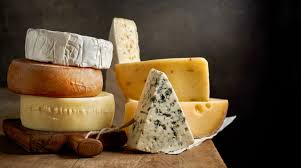The decline in fluid milk sales contrasts with the rise of organic and value-added dairy products. What does this mean for dairy farmers? Explore how these trends are transforming the market landscape.
Summary:
In the midst of a fluctuating dairy industry landscape, September 2024 saw a 1.6% drop in total fluid milk sales compared to the prior year. Despite this, the demand for more varied and organic products has surged. Organic milk sales rose by 9%, underscoring a strong consumer preference for perceived health benefits and environmental options. The ‘other’ conventional categories also soared with a notable 31% growth, pointing towards a burgeoning interest in non-traditional dairy options. Furthermore, value-added dairy products have carved out a significant niche, boasting a 44% year-to-date increase as consumers gravitate towards options like lactose-free milk and drinkable yogurt. This shift signals a broader transformation within the industry, prompting a strategic rethink in processing and supply dynamics to adapt to these evolving consumer trends.
Key Takeaways:
- Despite a dip in total fluid milk sales in September, organic milk sales have surged by 9% compared to the previous year.
- Organic products, including various types of fluid milk, are gaining popularity, showing year-over-year growth.
- The “other” conventional fluid milk products category experienced substantial growth, indicating shifting consumer preferences.
- Year-to-date milk sales show a modest increase, defying the long-term trend of declining milk consumption.
- Whole milk sales continue to climb, bolstering overall fluid milk growth.
- Interest in value-added products like lactose-free milk and eggnog is rising, suggesting a shift towards more specialized dairy items.
- Increased demand for Class I milk could positively impact producer milk checks and milk supply dynamics.
- Global dairy trade indicates potential rising prices, as shown by the increase in the Global Dairy Trade Index.

If you’ve ever needed clarification on why certain products gain popularity while others fade, you’re not alone. The dairy market is a dynamic landscape, shaped by consumer preferences. Traditional fluid milk sales may be slipping, but the rise in organic and value-added milk products continues to build momentum. With nearly 3.5 billion pounds sold in a single month, the numbers tell two tales: a 1.6% dip in conventional milk sales starkly contrasts with a robust 9% surge in organic milk products. Why are consumers abandoning traditional milk and embracing organic and value-added options? The market, seemingly in flux, leaves dairy producers and sellers contemplating this very question as they navigate a landscape that’s becoming increasingly complex and diversified. As we dive deeper into this trend, we uncover the reasons behind this consumer shift and the potential impacts on the agricultural industry.
Unraveling the Fluid Milk Saga: Changes in the Dairy Aisle
The fluid milk industry has recently experienced a nuanced shift, accentuated by a 1.6% drop in total fluid milk sales in September 2024 compared to September 2023. However, beneath these figures lies a story of change and opportunity. Notably, while traditional fluid milk sales face challenges, the demand for organic milk has surged. In September alone, the sales of organic milk—which account for about 10% of total fluid milk volumes—rose by 9% year-over-year. This uptick indicates a growing consumer interest in organic products, as demonstrated by the sale of 249 million pounds of organic milk during this period.
Moreover, a particular category within the conventional fluid milk segment has emerged as a strong performer: the ambiguously termed ‘other’ conventional fluid milk products. This segment witnessed an impressive growth of 31% compared to September last year, suggesting a diversification in consumer preferences away from traditional milk types. This could hint at a transformation in how consumers perceive and utilize fluid milk, with a trend towards more specialized or functional milk products.
The broader implications of these shifts could be significant for producers. A return of milk demand toward Class I could enhance producer milk checks and impact milk supply dynamics. As processors choose to bottle over processing into commodities, this might tighten supplies and potentially drive prices upward, offering a glimpse into the complex interplay of market forces at work.
The Green Revolution: Why Organic Milk is On the Rise
The organic milk sector is witnessing a notable surge, with a remarkable 9% increase in sales. This growth is a fleeting trend and an indicator of shifting consumer preferences. Why are more consumers reaching for that distinctive green label? The motivations predominantly revolve around perceived health benefits and environmental stewardship. Organic milk often boasts higher omega-3 fatty acid content and no synthetic hormones or antibiotics, making it an attractive option for health-conscious individuals.
Additionally, organic farms’ commitment to sustainable practices aligns with the growing consumer desire to reduce their environmental footprint. As we delve deeper, sales of specific products reflect this trend, with organic whole milk, reduced-fat (2%), and low-fat (1%) milk all showing year-over-year increases. This shift suggests a broader transition towards organic options, driven by nutritional awareness and ecological considerations.
Surging Ahead with Value-Added Dairy
As consumer preferences evolve, the demand for value-added dairy products is carving a new niche within the market. This burgeoning category, marked by a 44% year-to-date increase, represents a shift in how consumers view and consume dairy. Products such as lactose-free milk and drinkable yogurts are leading this transformation, driven by their promise of health benefits and convenience.
In an age where dietary restrictions and time constraints are commonplace, these value-added options offer solutions that traditional dairy products do not. Lactose-free milk caters to the lactose-intolerant demographic, ensuring they don’t miss out on the nutritional benefits of milk. Meanwhile, drinkable yogurts provide a quick, healthful alternative perfect for busy lifestyles. The function of these products goes beyond mere sustenance; they tap into contemporary health trends, offering probiotics, added vitamins, or reduced sugar variants that resonate well with health-conscious consumers.
This trend is driven by necessity and an increased awareness of personal health and well-being. Consumers actively seek products that align with their dietary goals and lifestyle choices, leading to a diversification in dairy consumption. As shoppers lean towards these innovative products for added value, the industry must adapt, balancing traditional offerings with these new demands.
Riding the Wave: Opportunities and Challenges in the New Dairy Era
For dairy farmers and the industry, these evolving trends in fluid milk consumption present both opportunities and challenges. As consumers increasingly gravitate towards organic and other value-added fluid milk products, it signals a shift in market dynamics that could have profound implications for farm operations and profit margins.
The uptick in consumption of whole and other ‘liquid’ milk products suggests a potential rise in demand for Class I milk, which could lead to higher producer milk checks. Higher demand incentivizes processors to allocate more milk to bottling rather than diverting it to manufacturing non-liquid dairy commodities. This shift could temporarily tighten milk supplies, consequently nudging prices upwards. For producers, this means adjusting production strategies to cater to this new demand while maintaining profitability.
Moreover, the developing landscape encourages strategic recalibration in processing and price-setting approaches. Processing plants need to adapt their capacity to better handle the increased volume of fluid milk, particularly in categories seeing growth, such as lactose-free and other specialty products. Pricing strategies could also evolve, providing premiums for milk destined for these higher-value segments. This presents a challenge for the industry to adapt and innovate, ensuring that they can meet the changing demands of the market.
For the savvy dairy farmer, the future seems ripe with opportunity. Focusing on producing milk that aligns with these trends could prove advantageous, potentially leading to higher revenues in a market slowly embracing diversity and quality over sheer volume. This shift in consumer preferences presents a promising opportunity for dairy producers to adapt and thrive. However, staying informed and responsive to these shifts will be key to navigating the ever-changing dairy landscape.
International Ripples: Navigating the Global Dairy Stage
The global dairy market is complex, and shifts and movements draw ripples across international borders. Recent indicators paint an intriguing picture. Notably, the Global Dairy Trade (GDT) Index marked a substantial 1.2% ascent—an unmistakable nod to the burgeoning demand revitalizing dairy economies worldwide. In particular, whole milk powder, a crucial commodity in the international dairy trade, surged to $3,984 per metric ton, achieving its highest valuation since mid-2022.
This upward trajectory in global markets does not exist in a vacuum, and its repercussions extend deeply into domestic spheres. Rising global prices may lead to optimistic outcomes for dairy farmers at home. As international demand strengthens, it holds the potential to elevate milk prices locally, providing a more robust revenue framework for producers. Additionally, the increase in export opportunities could catalyze local markets, challenging them to meet swelling needs and adjust operational capacities.
Yet, new complexities emerge as these global dynamics unfold. Enhanced prices can stimulate intensified domestic production, straining resources. Dairy farmers must remain vigilant, balancing the lucrative prospects with the implications for supply chain logistics, production costs, and sustainable practices. These intertwined global trends testify to the dairy market’s ever-evolving landscape, urging stakeholders to navigate with strategic insight and foresight.
The Bottom Line
While the ebb in traditional fluid milk sales might initially strike as a setback, it unveils an era rich with potential through burgeoning organic and value-added products. These areas are not merely bright spots but symbolic of a shifting tide in consumer preferences, charting a promising course for the dairy industry to explore and expand. As we navigate this evolving landscape, the question remains: will continued innovation and adaptation redefine the dairy aisle, or are these trends harbingers of a more profound transformation in how we perceive and consume dairy? The future beckons with possibilities yet to unfold.
Learn more:
- Is the Summer Heat Finally Over? Dairy Farmers See Milk Production Stabilize but Challenges Remain!
- Is 2024 Shaping Up to Be a Disappointing Year for Dairy Exports and Milk Yields?
- Navigating the Waves: Dairy Producers Defy Challenges to Keep Barns Full Amid Soaring Milk Prices and Adverse Conditions
 Join the Revolution!
Join the Revolution!
Bullvine Daily is your essential e-zine for staying ahead in the dairy industry. With over 30,000 subscribers, we bring you the week’s top news, helping you manage tasks efficiently. Stay informed about milk production, tech adoption, and more, so you can concentrate on your dairy operations.







 Join the Revolution!
Join the Revolution!







